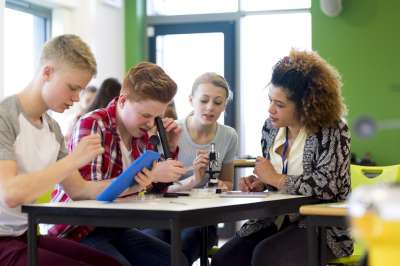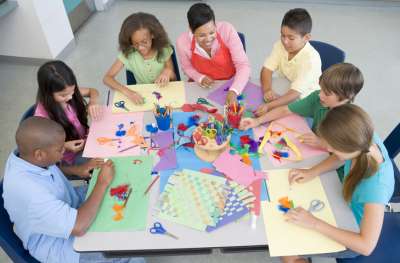Accountability is a critical 21st Century and social-emotional skill
Numbered Heads Together is a cooperative learning strategy that holds each student accountable for learning the material by having students work together in a group. This is an excellent strategy for teaching accountability in the classroom.Looking for more resources on 21st Century skills and social-emotional learning? Find them in our FutureFit resources center.
Numbered Heads Together: A Cooperative Learning Strategy
This is a comprehensive guide to the cooperative learning strategy, Numbered Heads Together. In this guide, we’ll discuss how to use Numbered Heads Together, which school subjects it can be applied to, and how it can stretch your students’ thinking!
What is Numbered Heads Together?
Numbered Heads Together is a cooperative learning strategy that holds each student accountable for learning the material.
Students are placed in groups and each person is given a number (from one to the maximum number in each group). The teacher poses a question and students "put their heads together" to figure out the answer. The teacher then calls a specific number to respond as a spokesperson for the group.
By having students work together in a group, this strategy ensures that each member knows the answer to problems or questions asked by the teacher. Because no one knows which number will be called, all team members must be prepared.

Why is this cooperative learning strategy important?
Numbered Heads Together promotes discussion, as well as both individual and group accountability. It’s a beneficial strategy for reviewing and integrating subject matter.
After direct instruction of the material, the group supports each member and provides opportunities for practice, rehearsal, and discussion of content material.
Not to mention, students with special needs often benefit when Numbered Heads Together is used.
Group learning methods encourage students to take greater responsibility for their own learning and to learn from one another (Terenzini & Pascarella, 1994).
Cooperative learning has been shown to increase student achievement, race relations, acceptance of special needs students, and self-esteem (Slavin, 1995).
How to make Numbered Heads Together happen
- Divide the students into groups of four and give each one a number from one to four.
- Pose a question or a problem to the class.
- Have students gather to think about the question and to make sure everyone in their group understands and can give an answer.
- Ask the question and call out a number randomly.
- The students with that number raise their hands, and when called on, the student answers for his or her team.

How to use Numbered Heads Together across different subjects
There are a variety of instances where the Numbered Heads Together cooperative learning strategy is beneficial for students. This includes…
Reading comprehension
Comprehension questions can be posed to groups, and students can work together to find the answers.
For example, when reading a story, students can be given the task of analyzing one of the characters. They can be asked questions such as, "Which character traits are stated directly, and which are implied by the author?" and "What information do you get from the character's speech and actions?"
Writing
Students can evaluate the quality of a piece of writing using a rubric.
Have students review the writing as a group and assign scores as a group. Ask them to respond with their scores and rationale using the numbered heads together strategy.
Math
Numbered heads together can be used when solving math problems.
Ask questions such as "What are the facts in this problem?" "Which strategy would be most appropriate?" and "What solution did your group agree on?"
Social Studies
This cooperative learning strategy can be used after reading a chapter in a text, or after material has been presented.
Ask clarifying questions about the text and have students find and discuss the answers. When groups are ready, review the answers using this strategy.
Science
This strategy can be used in preparation for a test or quiz.
Allow time for students to study together in their groups and perhaps create questions that might be on the test or quiz. Using the numbered heads together strategy, ask questions about the material that will be on the test or quiz.
Stretch your students’ thinking with Numbered Heads Together
Numbered Heads Together can be used at a variety of levels. The teacher may start with factual information questions, and as students become more familiar with the strategy, ask questions that require analysis or synthesis of information. Student groups can be given statements such as, "School uniforms help to keep students focused on academics." Their task is to come to a consensus on whether they agree or disagree, explaining their reasoning.
After the students respond, have the other groups agree or disagree with the answer by showing a thumbs up or thumbs down, and then explain their reasoning. Or, if the answer needs clarifying, ask another student to expand on the answer.
To further enhance your teaching strategies and create a future-ready classroom, visit TeacherVision's FutureFit resource center. It's filled with a wealth of resources designed to help you integrate critical 21st-century skills into your curriculum!

















